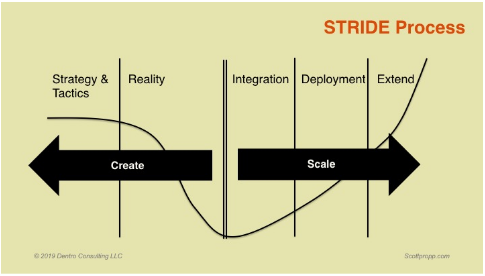
How to avoid the coffin corner.
When pilots were first probing the sound barrier, there were several aircraft that were inexplicably lost. As pilots and designers learned more about how air behaved when being pierced at the speed of sound, they discovered a small window of time where supersonic aircraft have no chance of recovery.
The same thing happens to businesses. Businesses can be established, and from all appearances seem secure, then suddenly lose traction and be unable to recover without significant restructuring.
When we look more closely at these businesses, they had what seemed to be good innovation on board that should have hedged them against disruption, yet when they pushed the throttle forward, they could not scale it in time.
For example, there is a more nuanced story to the struggles of businesses like Kodak, Blockbuster and Xerox Parc. These stories are usually told from the front of auditoriums as a tale of management that was overtaken by their own failure to respond to changing client preferences. Leadership is pilloried as having both a lack of courage and vision – as well as just wanting to keep the bonus checks coming.
The truth is that each of these firms had promising responses to those challenges under the corporate umbrella. Kodak had some of the first digital photo patents and prototypes invented (see article here). Blockbuster had an opportunity to partner with Netflix (article here) and instead doubled down on its core. Xerox had everything they needed to lead into the world of personal computing, as evidenced by the downstream success at Apple.
Just as the aircraft referenced above could fly well on this side of the sound barrier, each of these firms had, at one time, major muscles of value creation that were proven by their founding. But when they were needed, they were unable to build ideas at scale, and customers disappeared faster than they could respond.
In each of these cases, the internal resistance scaled faster than the solution.
Much like the lifeboat drill on a cruise ship that’s enjoying smooth water and sunshine, it’s hard to maintain vigilance on your idea-to-scale engine when the main business models are printing money. Instead, management takes victory laps and has analyst days with finger hors d’oeuvres and champagne.
Until something bad happens.
A little at first, then all at once. Hemingway’s advice regarding bankruptcy is very prophetic for those who are charged with serial value creation inside larger firms. Core businesses that have been burnished over years of success are particularly vulnerable to the massive underlying shifts digitization is bringing as it moves from connecting people to connecting our systems.
Execution across the gap is a muscle that if not utilized quickly will lose its ability to function. The natural affinity of our leaders draws them into tight cabals of doers and thinkers, which is fine as long as the business is on track and not perturbed.
The Messy Middle
When we talk about the path successful firms took, we usually skip the middle of the book, and rush right to the end state. For example, we look at Apple’s trillion dollar market cap, and imply that is was a fate destined to happen. The truth is that it took decades of hard work, consumed a barn full of cash, and took some very heroic decision making to get into the position it now enjoys.
So then, how do we prepare our teams to successfully embrace the hard work that is needed, while keeping our stakeholders and investors from defecting? Well if there was a simple answer, we’d all be doing it.
What I can offer to the conversation is a battle-proven method to allow a firm to engage the right minds, in the right problems, at the right time.
Enter STRIDE. STRIDE is a framework I use with clients to either establish or reinforce a practice that allows them to seek and build valuable new products and services using their full set of innate competencies and resources.
The STRIDE framework uses five stages to set up cross-functional teams for the successful maturation of ideas into scalable new offerings. It also uses the latest thinking in team formation, leadership styles and governance to allow a firm to keep up a robust idea-to-scale practice that serves them well in peacetime and war.
Executing a project – even a small one – using this model can help to keep the value development muscle healthy. By making sure that a firm can find and form a value-building engine, it is making sure that when it’s needed, they will be able to respond.
If you’d like to talk more about how to establish a cross-functional framework that many others have found valuable, I would encourage you to reach out. Feel free to set an appointment using this link or please give me a call at 847-651-1014.
Related posts you can benefit from…


